P.PSH.1504 - Deep Learning Vision for Label and Red Meat Cut Identification
An AI camera can now be trained to successfully read and identify red meat labels, cuts and primals.
| Project start date: | 20 May 2024 |
| Project end date: | 15 October 2025 |
| Publication date: | 29 October 2025 |
| Project status: | Completed |
| Livestock species: | Grain-fed Cattle, Grass-fed Cattle, Sheep, Goat, Lamb |
|
Download Report
|
|
Summary
This project aimed to trial an off the shelf deep learning smart camera system for red meat label, cut and primal inspection. The system was implemented at a secondary processing site and trialed in a number of use cases and scenarios. Utilising artificial intelligence (AI), the example based deep learning algorithms are able to make more human-like decisions for difficult vision tasks that the traditional rule-based algorithms can’t manage. Around the core deep vision component, an automated reject system with locked reject bin and conveyor system was added, to automatically reject packs which are deemed to be failures. The system's ability to also inspect label characteristics and meat cut types, allows the business to control most aspects of product packaging to maximise quality and minimise the chance of product recalls.
Objectives
The project had the following objectives:
• smart camera-based deep learning algorithms which inspect labels and meat cut types
• automated reject system with soft fall to limit pack damage and locked bin for Quality Control Point compliance
• centralised order management system with integration to ERP system
• Quality Control Point compliance application with full audit log of all relevant system selections, changes and product images via login access control for specific authorised users
• high performance levels achieved for false positive, true positive and false negative metrics when compared to traditional rule-based vision systems
• an AI vision system which can be managed with trained, in-house staff rather than expert vendor support for adding new products or fine-tuning existing products
• local vendor support
• an AI vision system which doesn’t require 1,000’s of training images to achieve exceptional performance levels, with only five to 12 trained images required for each product
• an AI vision system which is also capable of primal inspections, 2D code reading and Chinese character recognition
• a system which ensures high levels of quality for customers while reducing the risk of recalls.
Key findings
The result of the project was the successful development of a production system which employed a Cognex smart camera with built-in artificial intelligence deep learning algorithms which outperformed traditional rule-based vision algorithms and performed as well as PC-based artificial intelligence algorithms, but without the need for vendor experts to add new products to the system, nor large data sets of images to train the system. The system’s performance showed a low (<0.29%) false positive rate, while maintaining a 100% true positive and 0% false negative rate.
Additionally, the system was developed with an interface that allowed for easy order management in a stand-alone mode as well as when integrated with an ERP system.
Finally, the system delivered a quality control point compliant system, recording all system selections and changes against specific authorised users to maximise product quality while ensuring recalls and their associated losses and costs were minimised.
Benefits to industry
With favourable results having been achieved for this research project, there will be significant benefits to the red meat industry in the form of an easily implemented vision system with more human-like capabilities to handle difficult visual inspection tasks in a format which is simpler and thus more affordable than traditional AI systems, and more easily managed with in-house staff, rather than vendor experts, while still achieving high performance levels.
These benefits are applicable across the red meat industry from primary to secondary processors, whether for domestic or export products, in label and meat inspection tasks.
Given the system’s ability to take any type of image and learn, the benefits are only limited by the scope of the industry’s imagination for applications that could benefit from the system’s capabilities. Specific benefits are likely to be brand integrity, by ensuring accurate labeling, limiting product recalls and ensuring continuation of market access.
MLA action
This project has successfully proved the capability of a new AI camera system in an early adopter setting. Future work will be led by the Australian Meat Processor Corporation and MLA in partnership to aid the adoption of this technology for a broader range of processors and brand owners to ensure benefits can be applied across the industry, while also continuing to train the technology for each individual supply chains requirements.
Future research
The AI capabilities of the camera will continue to be explored in future research projects.
More information
| Project manager: | Jack Cook |
| Contact email: | reports@mla.com.au |
| Primary researcher: | Retail Ready Operations Australia |


